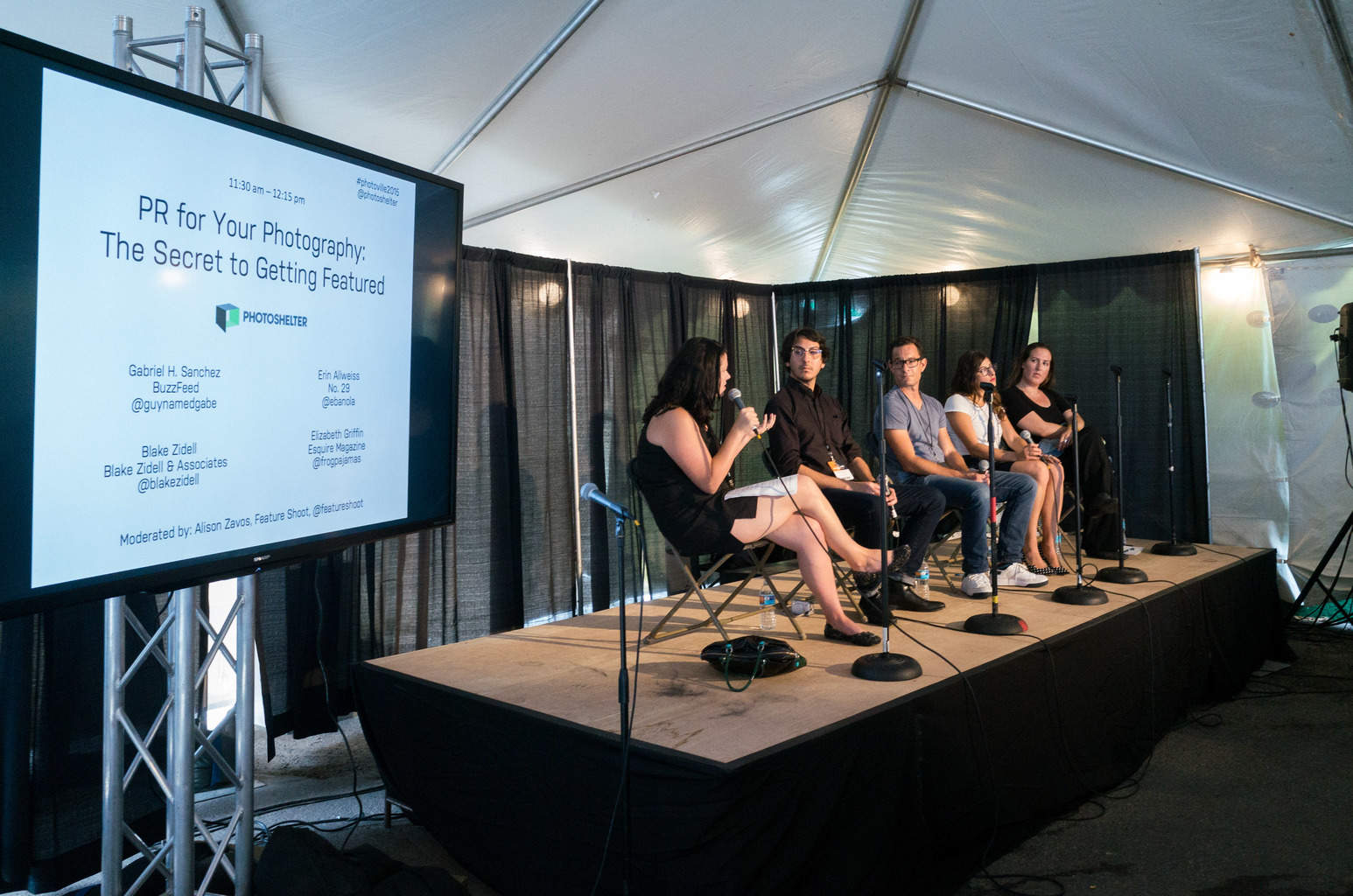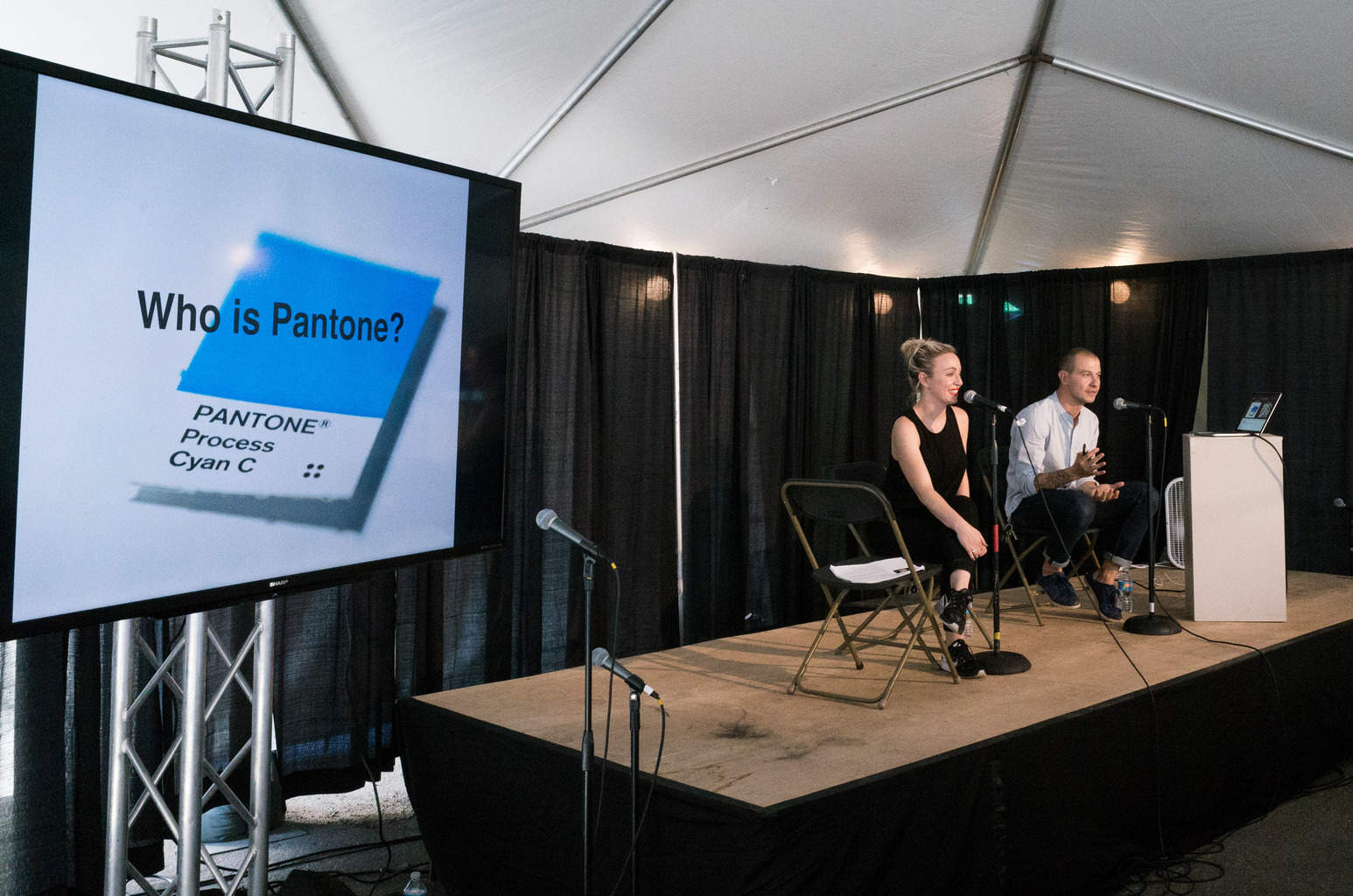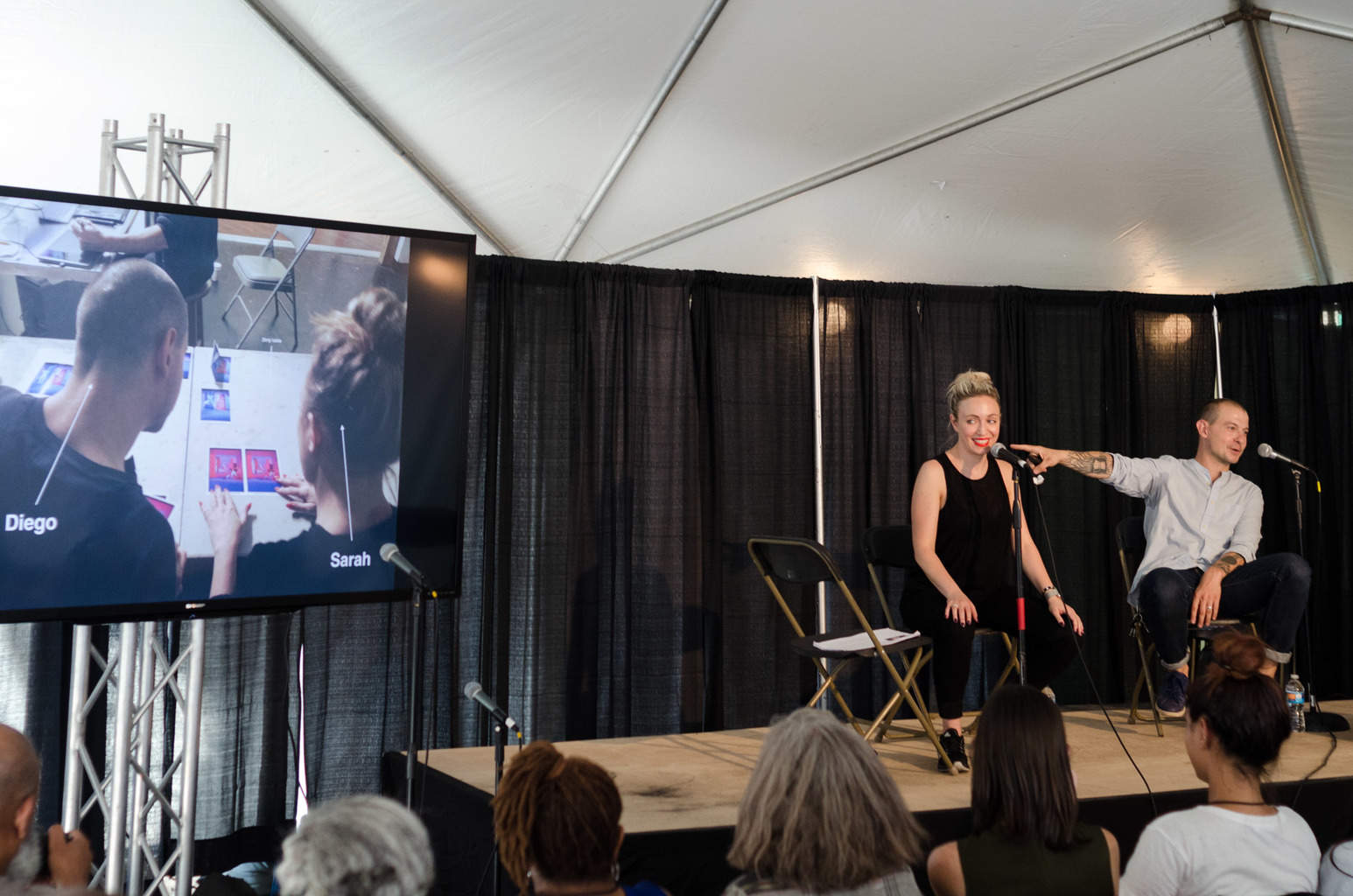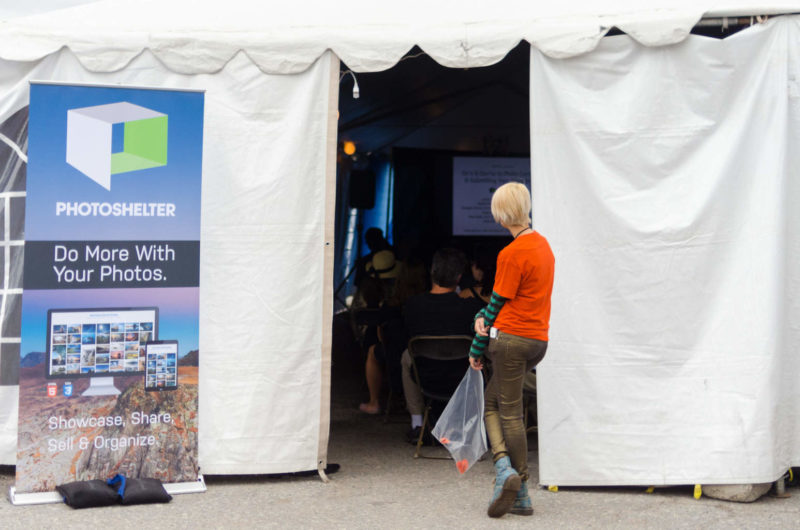Visual content is on the rise. Organizations of every kind are going visual – because if you don’t, your audience will scroll right by onto something more engaging.
So how can brands master visual storytelling? One way is to take a hint from the pros.
Photographers are champions of visual storytelling, and on Friday, we hosted a professional development conference for photographers at Photoville in Brooklyn. Not only were the presentations packed with words of wisdom for photographers, they also shared great insights for brands.
Here are ten things organizations can learn from Photoville.

1. Brands have to know how to speak visually.
“We have to speak a different language,” Elizabeth Griffin said of her role as the Photo Editor for Esquire Magazine (online). She shared that she finds photographers on Instagram – whether to use their Instagram pics or to commission them for shoots. She studies how photographers like Dave Krugman use Instagram not just to showcase great photos, but also to connect with people and build an audience.
Brands can use this as a model – they should produce and source great visual content, and use it to engage their community.
2. Photographers diversify portfolios.
Like Griffin, Gabriel Sanchez, Photo Essay Editor at Buzzfeed, also uses social media to source photographers. But he warned there’s not just one core social media channel to find them. He scans all the outlets and makes sure to check out a photographer on different channels, because a photographer might showcase just one collection on Instagram, and have just what you’re looking for on his or her website.
3. “Swarm.”
Sanchez explained that Buzzfeed – a visually communicating powerhouse – publishes content across platforms. They call it the “swarm.” One person publishes a body of work in the science column, and then someone else cross posts in the sports column. Think about your potential channels and angles. How could you share a great piece of content in a different way? How could you create a “swarm” around your photo or video?
4. Make telling your visual story a little easier for a journalist.
Erin Allweiss, founder of the NYC communications firm Number 29, recommended have captions for photos ready to go for a journalist when you pitch a story. Not only is this one less thing for the journalist to think about, it also ensures your visuals are presented in context.
5. Market the thing you want to be your signature.
The PR panel advised the audience of photographers to develop a signature, a specialty. Organizations, too, should develop content that shows off what makes the organization different. Think about what makes your brand a standout. Do your photos, videos and infographics not just catch your audience’s attention, but also communicate your brand’s unique mission?
6. Emphasize the “who.”
Public relations expert Blake Zidell encouraged the audience, “emphasize the ‘who.’” When you’re creating visual content, always keep in mind who will connect with your work. Then, when the time comes to send this great content out into the world, share it with the people who will care via the channels they follow.

7. Collaborate.
Stefan Ringel, Communications Director to Brooklyn Borough President Eric Adams, said, “we use art to highlight issues and issues to highlight art.” Everyone – from elected officials to big brands – wants to tell a visual story. And artists want to showcase their work. When organizations and work together, they have a tremendous opportunity to get mutual benefit.

8. “Make it Brilliant.”
“Make it Brilliant” is the tagline for creative director Diego Marini and photographer Sarah Silver’s 2014 campaign for Pantone – and it was the driving force behind the project. The duo explained that “Make it Brilliant” became a call to action, in terms of color, and in terms of being creative. Next time you’re creating something, follow their lead. Make it Brilliant.

9. Trust.
The “Make it Brilliant” campaign is filled with incredible imagery because of the strengths of the team who created it. Silver explained that Marini shared his vision with her, and let her run with it. Marini had done 2 months of needs assessment for Pantone and had an extensive deck of inspiration. And when the time came to let Sarah do her job, he trusted her to make his vision a reality.
10. Take creative risks.
Diego and Sarah laughed that the “Make it Brilliant” campaign was a pretty adventurous project for Pantone. The team had to navigate a series of challenges to achieve their ambitious vision – from building and striking 3 sets in a day to shooting movement without a lot of light. They had to meld their creative vision with technical constraints and a tight budget. But in the end, it was all worth it and the campaign was a huge success, growing Pantone’s social media following by 200% and engaging the company’s target audience of design-minded creatives. Now, are you feeling inspired to take a risk with your visuals?
All photos taken by Fernando Gomes.



